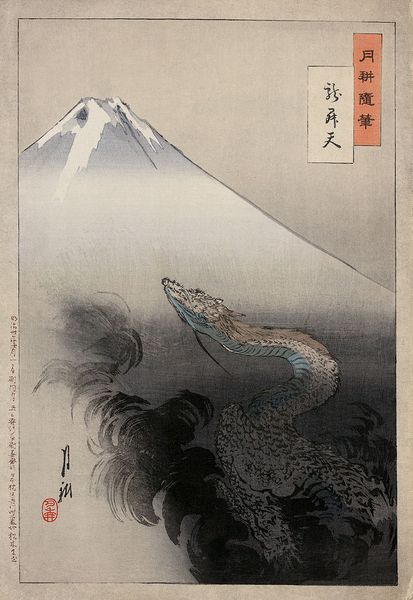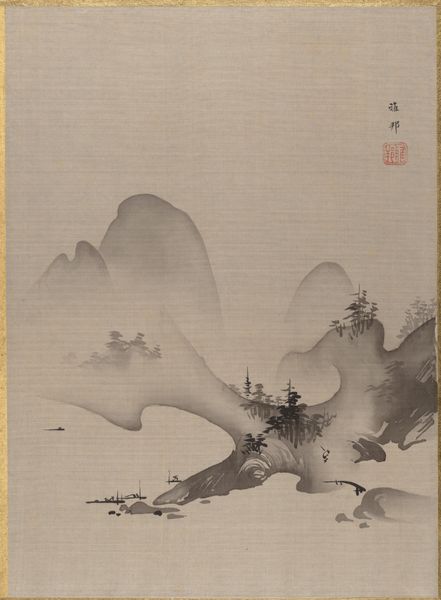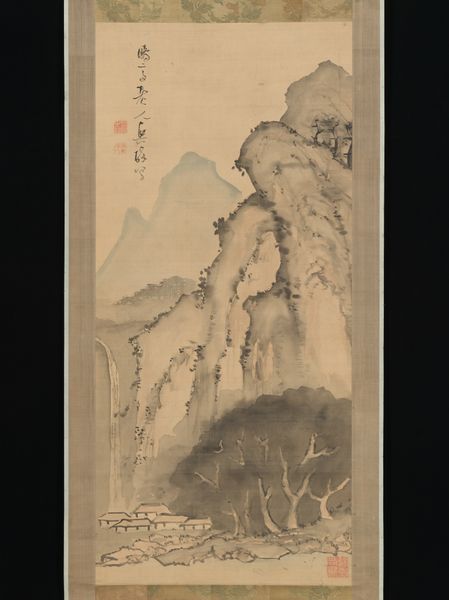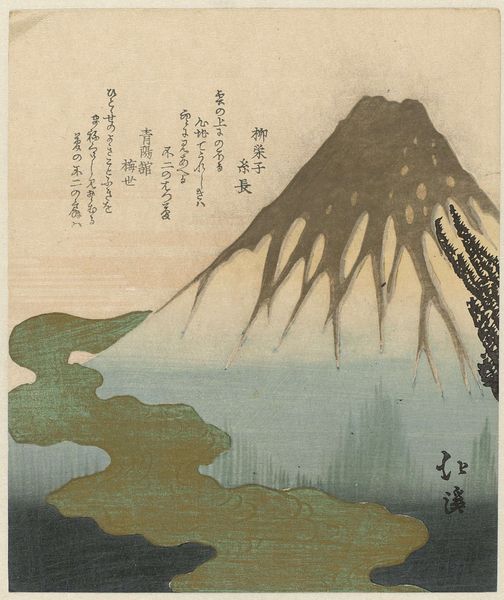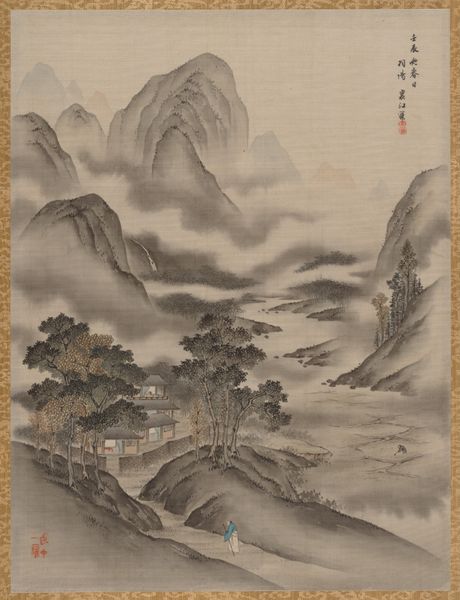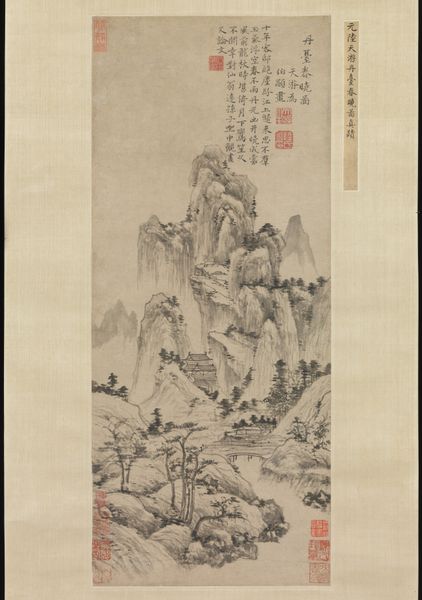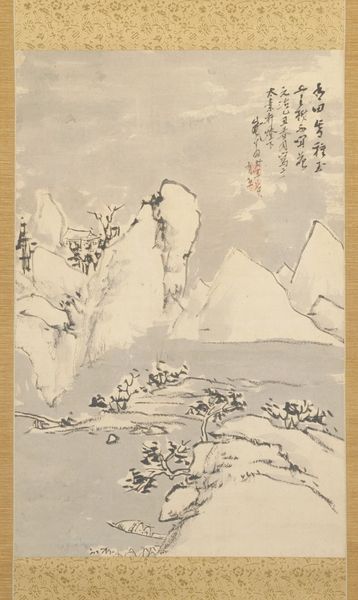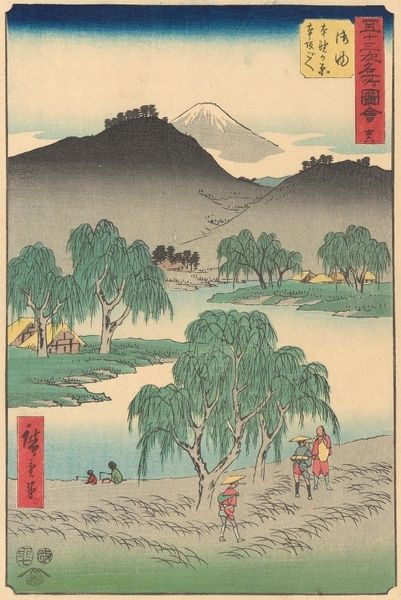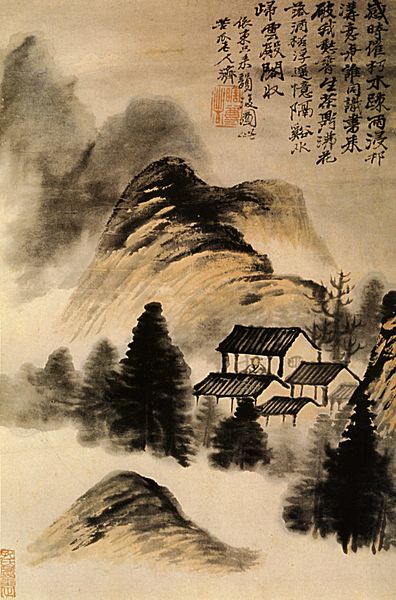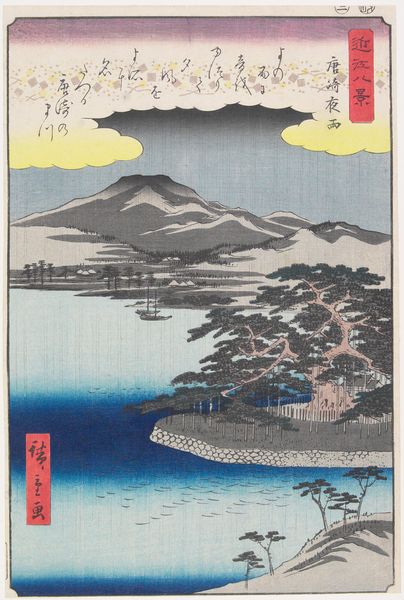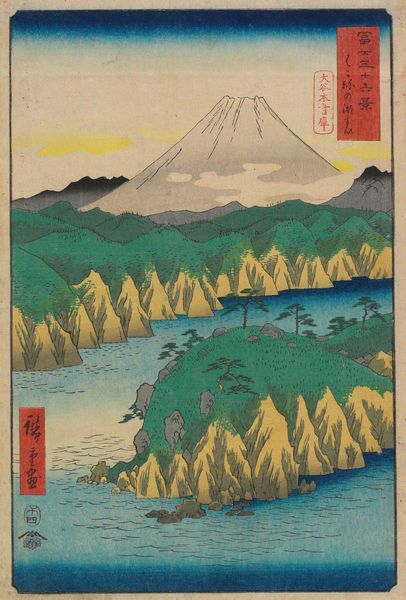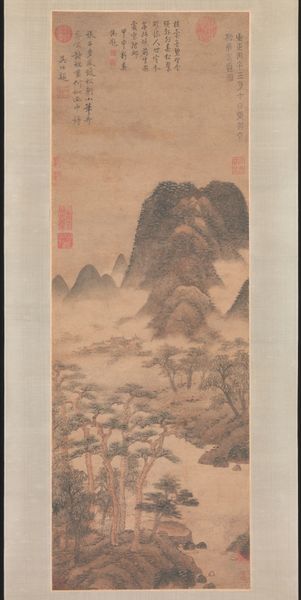
#
pencil drawn
#
toned paper
#
light pencil work
#
pencil sketch
#
asian-art
#
landscape
#
charcoal drawing
#
japan
#
personal sketchbook
#
pencil drawing
#
underpainting
#
mountain
#
24_meiji-period-1868-1912
#
watercolour illustration
#
watercolor
Dimensions: 14 1/8 x 10 3/4 in. (35.9 x 27.3 cm)
Copyright: Public Domain
Editor: This is "Mount Fuji" by Kawanabe Kyōsai, made sometime between 1877 and 1897. It’s currently held at the Metropolitan Museum of Art. I'm struck by the tranquil yet dynamic quality of the landscape - the calm mountain versus the active brushstrokes of the foreground. What do you make of it? Curator: The dynamism you noted is fascinating when considered against the backdrop of Meiji-era Japan. The image evokes traditional ukiyo-e landscapes, yet it appears almost deliberately incomplete. This aligns with the era's complex negotiation between embracing Western modernity and preserving cultural identity. Notice the presence of Mt. Fuji itself, already iconic; how do you think its persistent depiction shapes the meaning for viewers? Editor: I imagine its constant re-imaging, at least to this viewer, serves as an enduring symbol, even an assertion of Japanese identity, particularly as the country modernized. Curator: Precisely. And that assertion happened largely for an internal audience undergoing rapid change, grappling with new cultural influences and the legacy of the Edo period. The print is thus functioning almost like propaganda. This kind of cultural positioning explains the enduring popularity and importance of landscapes from that period. What aspects of its institutional history affect your view? Editor: I guess knowing it is displayed in the Met in New York alters its context, becoming more of an ambassadorial work or maybe even an artifact of cultural exchange instead of purely for domestic consumption. Curator: Exactly. So, considering both its moment of creation and its current museum context, what broader conclusions might you draw about the role and function of landscape art? Editor: That art is often not created in a vacuum. Forces always at play—social, political, cultural, even institutional. It highlights the fluid role of the artwork as a mirror and shaper of cultural values, subject to changing interpretations across time and place. Curator: A very perceptive summary; it provides rich historical understanding!
Comments
No comments
Be the first to comment and join the conversation on the ultimate creative platform.
